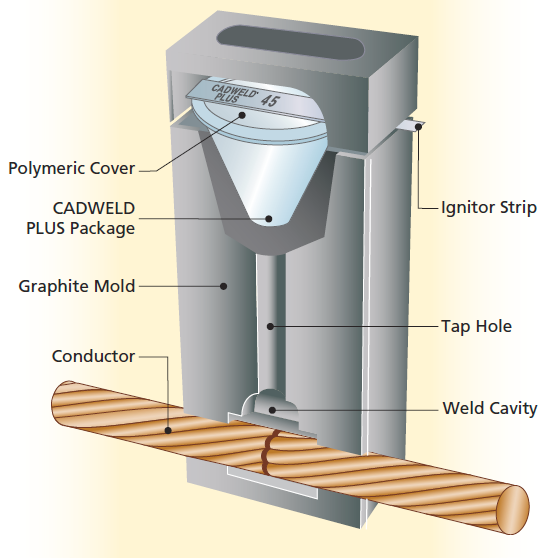Maximising Your Grounding System
MAXIMIZING YOUR GROUNDING SYSTEM
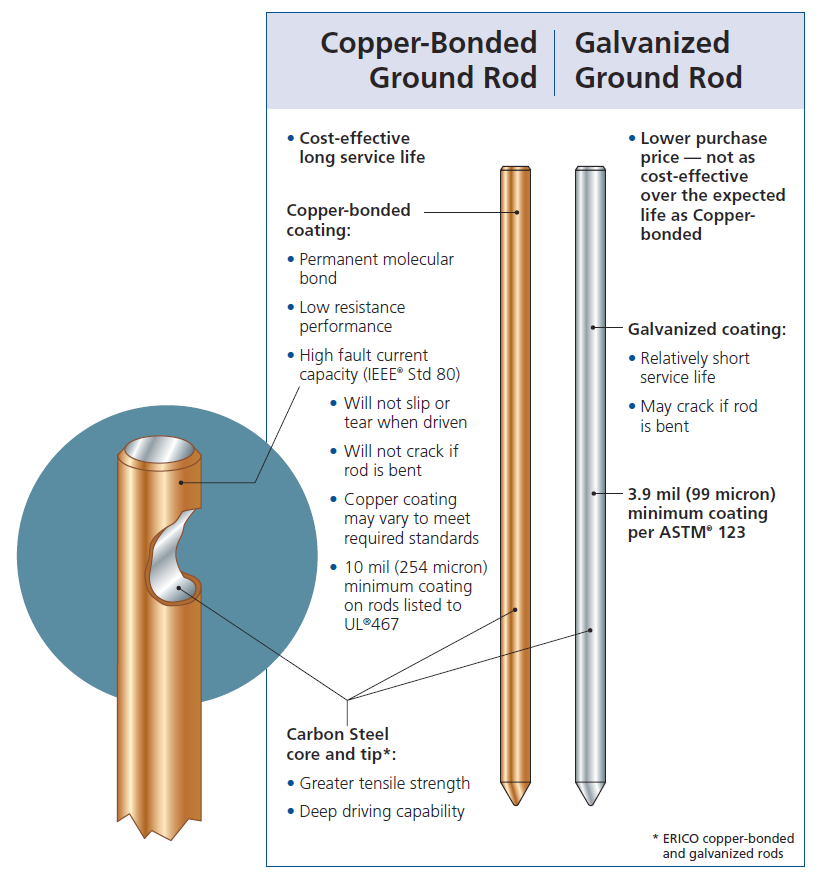
From Ground Rods to Ground Enhancement Material (GEM):
Get the Facts to Maximize Your Grounding System
To ensure you get the most out of your grounding system, you need to have all of the facts. Which ground rod should I choose? How will ground conditions affect my grounding system? How can I maximize my system’s performance and save money, too? Turn to ERICO for the support you need.
Ground Rods: What Do the Experts Say?
There are a lot of factors to consider when determining which grounding system electrode is best for your specific application. Do you select an electrode based solely on cost? Or is your decision also influenced by longevity and performance?
If a lower purchase price is the only reason for selecting an electrode, a galvanized steel rod is the way to go. Unfortunately, a galvanized steel rod is not the most cost-effective option due to its relatively short service life.
In 1995, the Fire Protection Research Foundation established the National Electrical Grounding Research Project (NEGRP) to document the performance of grounding system electrodes over time. The NEGRP evaluated the variation of grounding electrode earth resistance at different geographic locations and explored the effects of several of the dominant variables over a period of 10 years.
The most extensive long term study on corrosion of buried copper and galvanized material was conducted between 1910–1955 by the National Bureau of Standards. The result of this study was to determine relative corrosion rates, which help set the benchmark for the use of copper-bonded ground rods to this day.
When the electrodes at selected sites were exhumed for corrosion analysis and observation, the results favored the use of copper-bonded ground rods.
- The copper-bonded grounding electrodes showed minimal corrosion when compared to galvanized rods
- Galvanized steel ground rods exhibited a loss of zinc, which resulted in excessive steel corrosion
Maximizing Your Grounding System
Latest Brochure
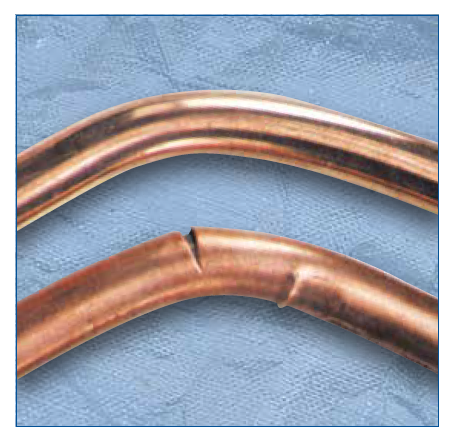
When an ERICO brand of copper-bonded ground rod (top) and a copper-clad rod are subjected to the same pressure load, the inferior copper-clad rod (bottom) develops cracks and creases to the outer sheath.
Damage to the rod negatively affects its serviceable life and puts the integrity of the entire electrode at risk.
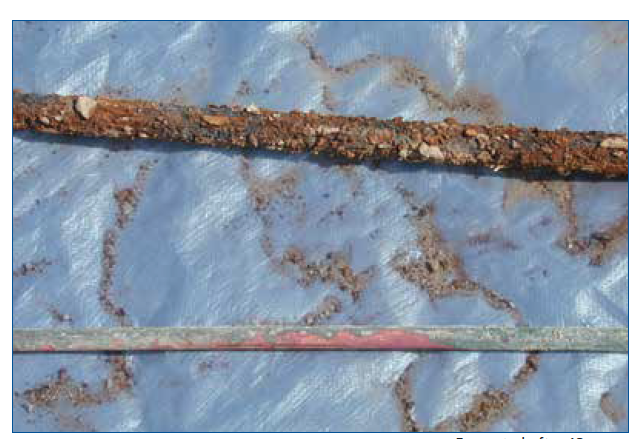 Excavated after 12 years
Excavated after 12 years
Top ground rod is galvanized steel, ¾” x 10’. Bottom ground rod is copper-bonded, 5/8” x 8’. Both ground rods were driven into the soil vertically at the Pecos testing site in Las Vegas, NV in December of 1992.
Both ground rods were exhumed from the site in April of 2004.
The loss of zinc on the galvanized steel rod resulted in excessive corrosion of the steel. The copper- bonded steel ground rods showed minimal corrosion.
 Excavated after 11 years
Excavated after 11 years
This is a galvanized steel ground rod driven into the ground vertically at the Pawnee testing site in Las Vegas, NV. This ground rod was buried from May of 1992 until March of 2003. The loss of zinc resulted in excessive corrosion of the steel. One area is reduced from a ¾” diameter to approximately a ¼” diameter due to the corrosion. The eventual failure would result in a potentially catastrophic loss of ground.
The ERICO brand of copper-bonded ground rod has an electrolytic coating of copper deposited over a layer of nickel. This process helps ensure a long-lasting molecular bond between the copper layer and steel core. Pentair recommends copper-bonded ground rods in most soil conditions, because the copper coating will not slip or tear when driven, nor will it crack if the rod is bent. Copper-bonded ground rods have a high tensile, carbon steel core, which is ideal for deep driving, and they provide a low resistance path to ground.
When compared to stainless steel or galvanized rods, copper-bonded ground rods are a cost-effective option over the service life. It is important to note that certain soils and land fill areas may not be compatible with copper. In these situations, stainless steel rods can be used. However, the high cost of stainless steel rods often prohibits their widespread use.
The Benefits of GEM
The NEGRP report also positively supported the use of GEM for a grounding system. The report showed that vertical electrodes in GEM displayed minimal corrosion.
ERICO brand of GEM can be applied around the conductors in a grounding system. GEM helps to reduce soil resistivity and lower ground impedance, which facilitates the dissipation of lightning energy into the earth mass. GEM is particularly useful in areas of moisture variation, sandy soils and rocky ground.
Don’t Forget the Connections
Connections are often the most critical element of a grounding system, and subsequently can become the weak point due to aging and corrosion. The preferred method of connection is the CADWELD exothermic welding process producing a molecular bond.
The capacity of a grounding circuit to protect the safety of personnel depends on the quality of the connections made.
Regular Testing
To properly design a grounding system, it is essential to test soil resistivity. The most accurate method and the one that Pentair recommends is the four-point method.
Soil resistivity should be tested before installing the ground electrode system, to make sure that the grounding system is meeting the IEEE®, NEC®, or local requirements. It is also recommended to test resistivity when expanding a building, adding significant amounts of electronics or telecommunications, installing or expanding a lightning protection system on a facility, or if the facility is experiencing problems with power quality. If the resistivity is not low enough, this may indicate that more ground rods are required.
Trust Your System to an Expert
The basic philosophy of a grounding installation should be to maximize the surface area contact of electrodes or conductors within the surrounding soil. Not only does this help to lower the earth resistance of the grounding system, but it also greatly improves the impedance of the grounding system under lightning surge conditions. It is recommended that some form of maintenance or inspection procedure be adopted to help ensure the long-term effectiveness of a grounding system.
Pentair’s products are designed and tested to meet the most demanding requirements available. Our electrodes (copper-bonded ground rods and accessories, such as couplers and connectors) comply with EN 50164-2. Certificates and test reports are available upon request.
Ground Rod Life Expectancy
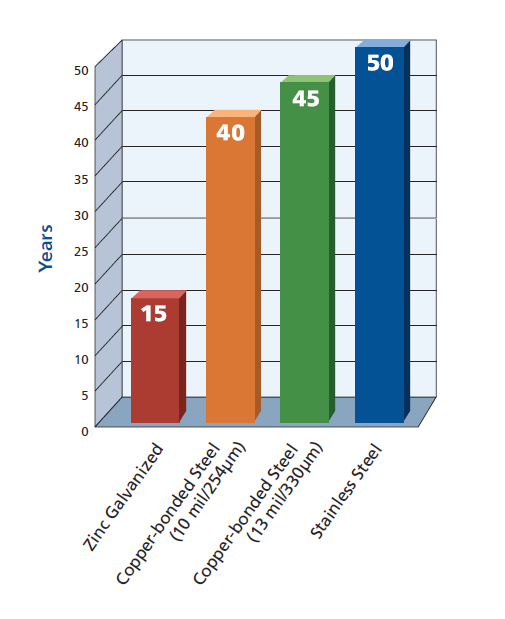
Ground Rod Annual Cost
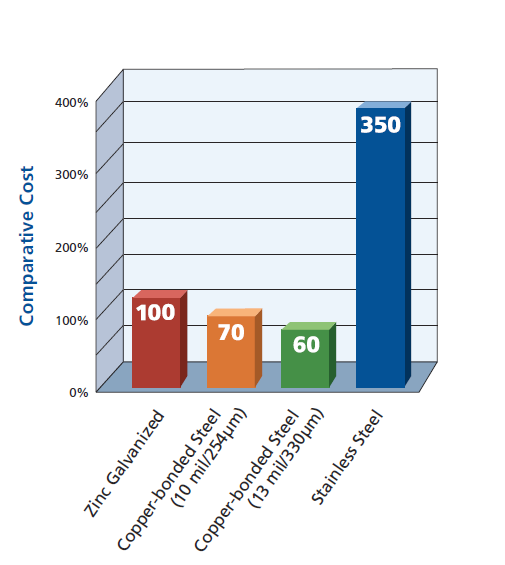
The CADWELD Mold
